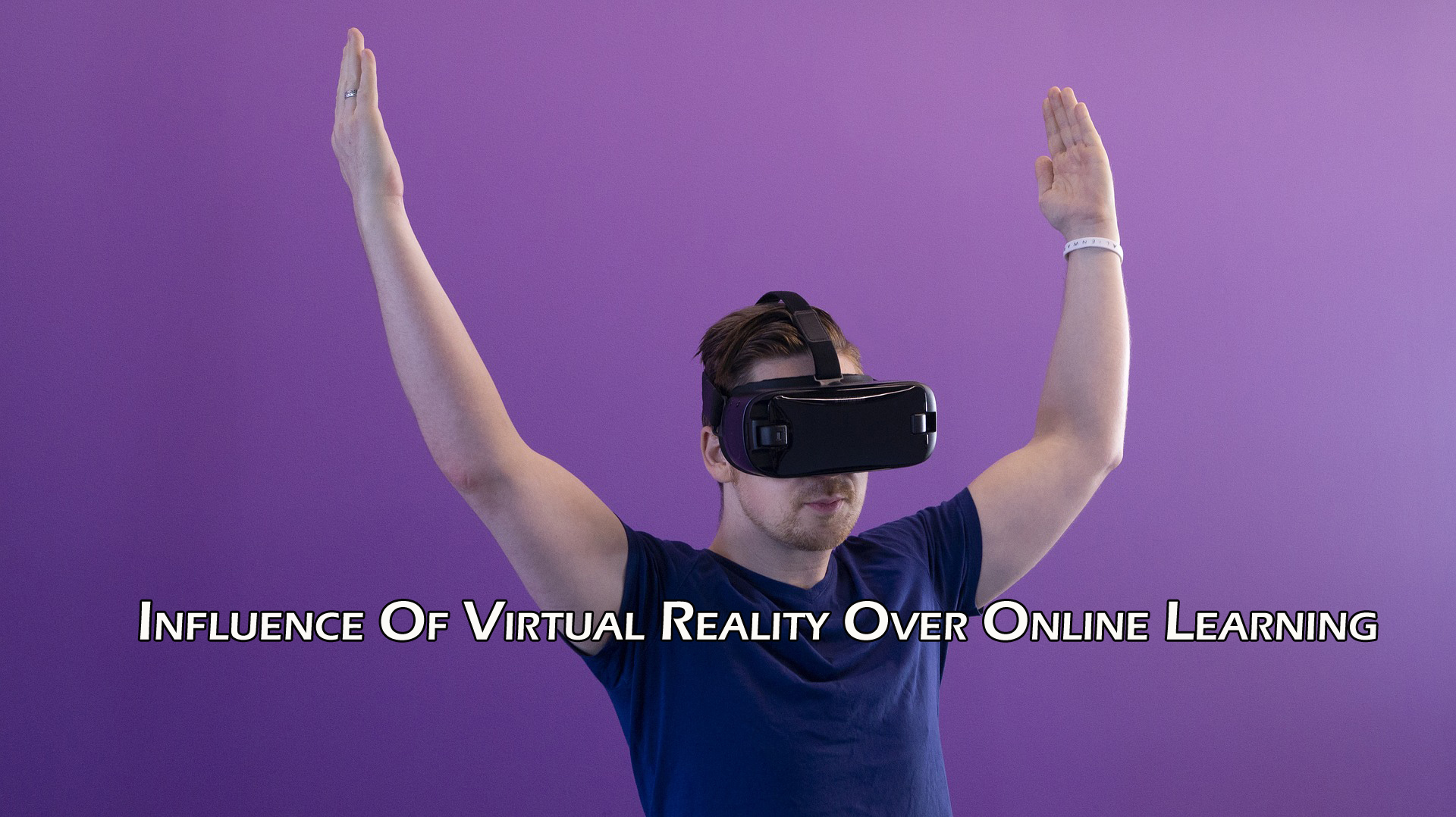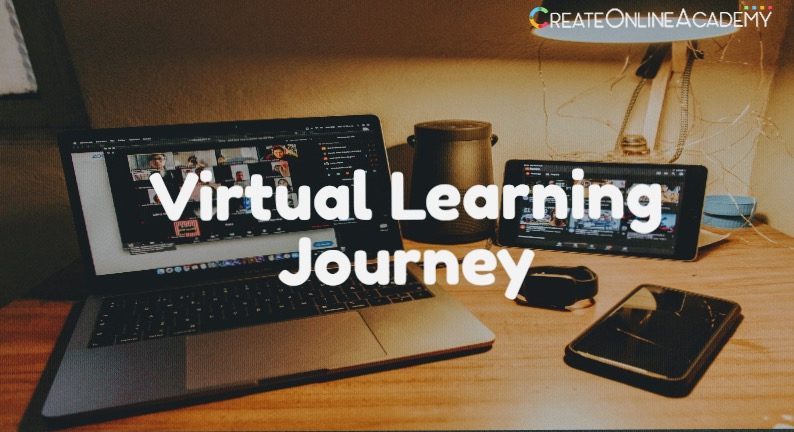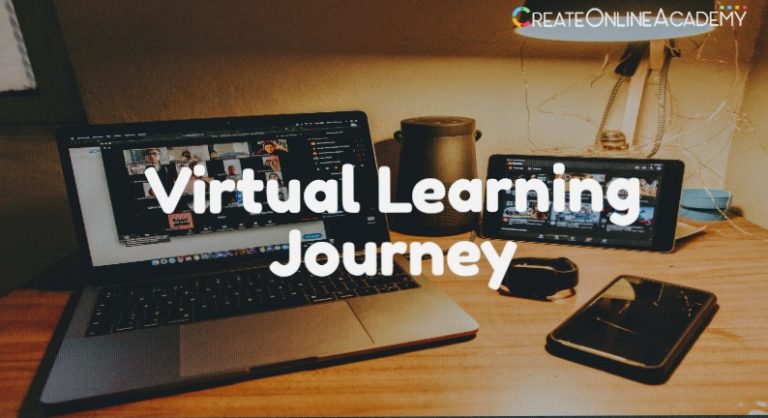Influence Of Virtual Reality Over Online Learning

VIrtual Reality Overview
Virtual reality is the term used to describe a three-dimensional, computer generated environment which can be explored and interacted with by a person. That person becomes part of this virtual world or is immersed within this environment and whilst there, is able to manipulate objects or perform a series of actions to determine what happens in the environment.
Virtual reality usually has these characteristics:
- Believable – You feel like you’re in your virtual world through what you see and hear.
- Immersive – As you move your head around, what you see changes as well, just as it would in real life.
- Computer-generated – VR worlds are usually created with complex 3D computer graphics that change in real time as we move.
- Interactive – You can interact with different objects in the scene, whether it’s pressing a button or opening a door.
Different VR headsets
The most important element to virtual reality is the headset, a device like a pair of goggles that goes over your eyes. The more expensive, higher quality headsets need to be connected to a computer to run apps and games, while some cheaper ones use a mobile placed at the front of the headset.
Headsets work best when combined with a pair of headphones, and there are other optional accessories such as hand controllers, to enhance your simulated experience of being in another world.
Mobile vs non-mobile VR headsets
Virtual reality headsets generally fit into two categories, mobile or non-mobile. Non-mobile will be preferable for most people exploring online learning with VR as the mobile headsets are much cheaper.
Mobile VR headsets
Mobile headsets are shells with lenses into which you place your smartphone. The lenses separate the screen into two images for your eyes, turning your smartphone into a VR device. Mobile headsets like the Samsung Gear VR and the Google Daydream View are relatively inexpensive at under $100, and because all of the processing is done on your phone, you don’t need to connect any wires to the headset.
However, because phones aren’t designed specifically for VR, they can’t offer the best visual experiences, and are underpowered compared with PC or game console-based VR. In addition, there is currently no positional tracking with mobile VR. You can look around an environment from a single point, however you can’t look around objects.
Non-mobile VR headsets
Non-mobile headsets, both non-tethered and tethered headsets (currently the most common) such as the Oculus Rift, HTC Vive and PlayStation VR headsets provide a more immersive experience at a higher price point. Most of these headsets are tethered with cables form the headset to an external piece of hardware to power the headset.
The dedicated display, use of built-in motion sensors and an external camera tracker, drastically improves both image and sound quality, as well as providing head tracking.
The trade-off, besides the clunky cables, is the price. The least expensive tethered options are currently around $400, and with the Rift and the Vive, you’ll need a powerful PC to run them, while the PS VR requires a PlayStation 4.
How can online learning benefit from VR?
Learn experientially for effective learning
Experiential learning is a process of learning through first-hand experience. It’s a method of gaining expertise and skills through the practical application of concepts, theories and problem solving techniques instead of just reading or hearing about them.
The Hermann Ebbinghaus forgetting curve roughly says that during a traditional lecture, if your absorption rate is at 100 percent on day one, there is a 50-80 percent loss of learning from the second day onward, which is reduced to a retention rate of just 2-3 percent at the end of thirty days. Experiential learning increases this retention rate considerably.
VR lets you learn experientially by immersing you to any world imaginable – walk with dinosaurs in the Jurassic Period, live through Stalingrad during WW2, practice a heart operation on a virtual avatar, talk to a press room full of journalists – the use cases are endless.
Here are some of the benefits of experiential learning with VR:
- Accelerates learning – repetitive learning or learning by rote can be dramatically improved by actually performing or visualising the learning material. VR learning uses problem solving, powerful visualisation, decision making and other elements to enhance the learning experience.
- Provides a safe learning environment – it is only natural that mistakes happen during the course of learning, and using VR simulations lets people learn in a safe controlled environment. Students can therefore try different approaches and understand for themselves what works best.
- Bridges the gap between theory and practice – students often learn textbook theory about a certain topic, experiencing this theory in an interactive 3D environment gives students a more memorable learning experience.
- Increases engagement levels – the virtual world lets students collaborate and learn from each other, increasing overall engagement with a tangible outcome result.
- Assessing complex learning is easier – VR can simulate a range of complex topics, from brain surgery to gravity, bringing the learning process to life.
Practice and visualise virtually anything, from anywhere
Just like traditional online learning, VR can be used anywhere with an internet connection. You can practice public speaking, experience walking through Ancient Rome or teleport inside a brain cell – all form the comfort of your own home.
Social VR is very important
The importance of social and collaborative learning
Whether it’s getting the job, building your network, or just interacting with customers, knowing how to interact with the people around you is an important element to success and can be improved by spending time with other people.
Lack of contact with other people can also harm your intellectual development. A BBC article about the impact of antisocial shift work on the human mind shows that when you’re in isolation and working long hours, you can lose memory, speed of thought and wider cognitive ability.
This is big negative of traditional online learning, there are discussion forums where you can e-meet and talk with other people, but you still miss the connection of a face to face interaction. Virtual reality goes some way to changing this – you can meet other people’s avatar in a virtual world, where elements such as eye contact and body language are still important.
Benefits of learning in a collaborative VR environment compared to traditional online learning include:
- Tolerant of diversity – as people from anywhere in the world can meet in the same virtual space with their avatars, there will be a huge amount of diversity. Students will learn to work with all types of people in a range of group based activities, getting very different perspectives on a range of topics taught in that class.
- Acknowledgment of individual differences – when questions are raised in the virtual class, different students will have a variety of responses. There will help create a learning environment which reflects a wide range of perspectives.
- Actively involving students – each member has opportunities to contribute in small groups. Students are apt to take more ownership of their material and to think critically about related issues when they work as a team.
- More opportunities for personal feedback – because there are more exchanges among students in groups, your students receive more personal feedback about their ideas and responses.
The current state of social in virtual reality
Social VR allows you to meet other students virtually, in much the same way you would in real life. You can do homework together (Bigscreen), travel around the world during the holidays (Facebook Spaces) and even attend classes together (Engage).
Combining the social aspects of current VR applications with educational programs lets students get a somewhat similar experience to actually attending classes and completing group work with other students.
Examples of VR currently being used in learning online
Here are some examples of how VR is currently being used in the educational industry. Companies are using VR as a standalone learning experience and also combining VR with traditional online learning courses.
Sales training and strategy course
Hybrid VR and regular online learning
This sales course combines traditional online tutorial videos with virtual reality for an enhanced learning experience. You’ll learn fundamental sales skills, such as how to give a sales pitch or how to sell at a trade show, and then practice what you’ve learnt in virtual reality.
Engage classroom
Complete learning in VR
This VR learning platform puts you in a virtual lecture or classroom with other virtual students, where you can watch lectures from leading teachers from around the world. Teachers can spawn objects into the lecture room, such as a skeleton or whale, to bring to life what they are describing.
Public speaking and storytelling
Hybrid VR and regular online learning
This hybrid public speaking online course and VR lets gives you an opportunity to practice what you learn. For example, you’ll watch videos and read about how to give eye contact to different sized audiences, then get the chance to practice this in VR in front of virtual avatars in realistic conference and meeting rooms.
Complete learning in VR
Unimersiv give you the opportunity to travel to Ancient Rome and wonder the streets with a guided tour of the city. This is a great example of how VR and improve history by bringing ancient cities and locations to life.
Future of online education and VR
From supplementary to entire learning experience
Currently online learning is mostly constrained to learning a useful skill (Udemy, CreativeLive), completing several lectures (Coursera) or improving areas of your existing knowledge (CreateOnlineAcademy). There are some longer, more in depth learning experiences (e.g. Udacity self-driving car course), however the majority of online learning does not replace traditional in person learning.
As VR improves, whole curriculum and degrees will be built within virtual environments, where you attend lectures virtually while retaining the collaborative learning experience with other students. This immersive form of learning has many advantages, for example being in a virtual chemistry lesson and the lecturer spawning a molecule or showing a chemical reaction virtually in that classroom.
Example future scenarios
Here are examples of how online degrees might look with virtual reality integrated into them.
1. Virtual aeronautical engineering degree
- Online discussion forums – ask questions and find answers about problems you are struggling to solve.
- Online video tutorials – the bulk of the learning content would be available in the usual online video format
- VR based lectures – when explaining concepts where a physical object would help, such as explaining the composition of an aircraft engine or how air flows over a wing, students could enter a virtual lecture to watch the professor explain these concepts with the aid of a virtual engine.
- VR study groups – when you’ve got group project to do, teams could meet in the virtual world to discuss ideas and develop solutions.
Virtual language learning degree
- Online discussion forums – ask questions and find answers about the language and culture you are trying to learn.
- Online video tutorials – the bulk of the learning content would be available in the usual online video format
- VR based roleplay – learning English? Travel to a hotel in London to practice booking a hotel room, or visit Bristol to practice booking a meal at a restaurant. VR allows students to practice their oral and listening skills in the country of the language they are trying to learn.
- VR cultural immersion – learning French? Visit historic sites and landmarks virtually all around France.
- VR social meetups – practice speaking the language you are learning with other beginners or experienced coaches in virtual rooms and locations.
Original Article:- https://virtualspeech.com/blog/how-virtual-reality-can-improve-online-learning









